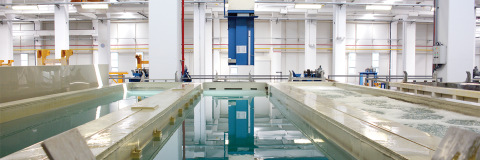Let’s say you plate parts in a Watts bright nickel bath for the automotive industry, but it seems to be inundated with organic and metallic contaminants.
What should you do to ensure the bath runs optimally? With anything and everything that may be plaguing an electroplating solution, the key is to avoid getting into a bad situation in the first place. If your problem happens to be the accretion of harmful metallic impurities escalating at an alarming rate, then, of course, you want to ensure you are preventing their introduction in the first place.
This requires carefully observing likely culprits, whether it be copper from busbars, iron, lead, and zinc from impure chemical constituents and/or anodic material, or chrome from racks and other tooling elements improperly stripped or in need of refurbishment due to cracks and tears in the protective Plastisol coating.
Electrolytic Purification Removes Metallic Contaminants
Electrolytic purification — low current density (LCD) dummying — can help to remove pernicious metallic contaminants like copper, zinc, iron, lead, cadmium, and tin. Coupling this procedure with an oxidation and high pH carbon treatment can help because metals like iron, zinc, aluminum, cadmium, tin, and chromium will precipitate. A carbon treatment will handle the organic elements as a final coup de grace.
Metal contaminants are primarily responsible for defects related to darkness/graying in the recesses/LCD areas, reduced throwing power (poor uniformity across the CD spectrum), overall dullness, poor ductility (percent elongation), HCD burning, adhesion failure, lowered efficiency (excessive gas due to polarization), brittleness, pitting, patterning, roughness, nodulation, staining, stripping, delamination and even skip plating.
The high pH treatment often should begin with the introduction of an oxidizer, and depending on the severity of the organic contamination and the type of problem organics, the applicator can begin with hydrogen peroxide (~30% H2O2 concentrated) at ~0.001% or 1 gal/1,000 gallons, the weaker of the two possible options. H2O2 is preferred initially because the reaction follows to completion with the formation of residual water, which is patently innocuous and benign. Potassium permanganate (KMnO4) is significantly more powerful but often leaves a trail or footprint that requires peroxide (0.05% v/v) to help precipitate the manganese.
High-pH Permanganate Treatment
Assuming you are dealing with a hefty load of tenacious organic molecules, we begin with the high-pH permanganate treatment. The first step is to pump the solution into a clean treatment tank, as it is not advisable to complete a batch carbon treatment procedure in the plating tank. The carbon can coat the anodes and other equipment, causing major issues like roughness once plating is resumed.
The solution should be at operating temperature or slightly above. A 14°F-18°F increase in temperature has the potential to double the electrochemical activity of any reaction; therefore, taking the solution to 160°F will improve the procedure. Adequate solution movement is crucial. Increase the agitation rate to the level of vigorous to maximize the opportunity for solution contact with the treatment chemicals.
A dual effect of oxidation and motion is achieved with air agitation. Nickel carbonate (NiCO3) is a suitable pH adjuster as opposed to NaOH, which can increase the sodium (Na) content and increase the potential for brittleness. Add NiCO3 at a rate of approximately 3-6 lbs./100 gals. until a final pH of around 4.8-5.0 is achieved. 0.5 opg (ounces per gallon) of KMnO4 should be pre-dissolved prior to adding to the tank.
The solution is then agitated for a minimum of 30 minutes and preferably 2x-3x longer than that to allow the permanganate adequate contact time with the organics. Peroxide can be added at this time to help remove the manganese. Once this oxidation phase is complete, it is time to adsorb the organics using powdered activated carbon at a rate of 0.5-1 opg or 3-6 lbs./100 gals.
Again, vigorous agitation is needed to ensure every area of the solution is touched by carbon, which often takes 3-5 hours. For the last half hour, add filter aid (often DE or diatomaceous earth) at half the rate of the carbon used. The agitation is then shut off, and everything should settle for about 4-8 hours. The solution is then pumped through a filter, and the bath is analyzed via titration, pH measurement, tensiometer, and Hull cell analysis to determine what additions are needed for optimal performance. If a subsequent electrolytic purification treatment is needed, only the elements not consumed by electrolysis, like boric, should be added until after the dummy.
Secondary Option is Available
Most baths, after being subjected to this level of aggressiveness, will operate optimally, but a secondary option is available to attack every possible pernicious inorganic and organic constituent in your bath. A low pH treatment achieved with the use of sulfuric or hydrochloric acid brings the pH to 2.5-3.0. The process for the low pH treatment is similar to a high pH treatment. Movement and temperature are increased, and peroxide is added. A steel cathode is then used with the standard titanium anodes and nickel chips used for the plating process, provided the A:C (anode-to-cathode) ratio is between ~1.5:1.
The cathode is then plated up with nickel at the 5-10 amperes/square foot (ASF) range for a couple of hours and then reduced to 1-5 ASF for a few more hours, depending on the level of contamination. The key to keeping the contaminants on the cathode and out of the bath is to increase the current all the way to 50 ASF for the last 5-10 minutes of the dummy process and then immediately remove the panel once the current has been turned off to avoid dissolving the dummied metals back into solution. A Hull cell can provide an idea of the time needed to dummy.
Even though bright nickel baths are clearly quite resilient and forgiving and can be cured of virtually any disease, no matter the gravity or magnitude of the diagnosis, it is important to remember that regular preventative maintenance procedures can avoid these lengthy and costly procedures.











